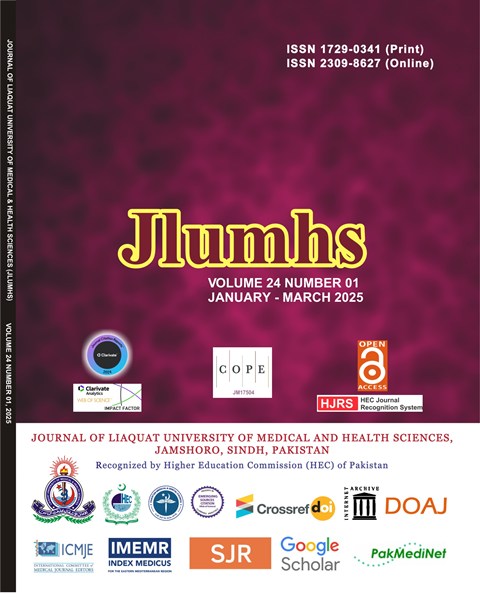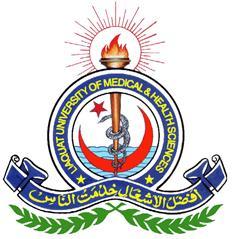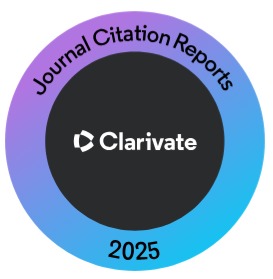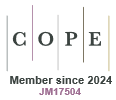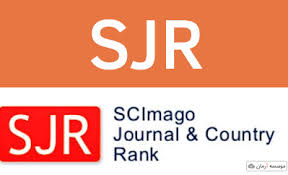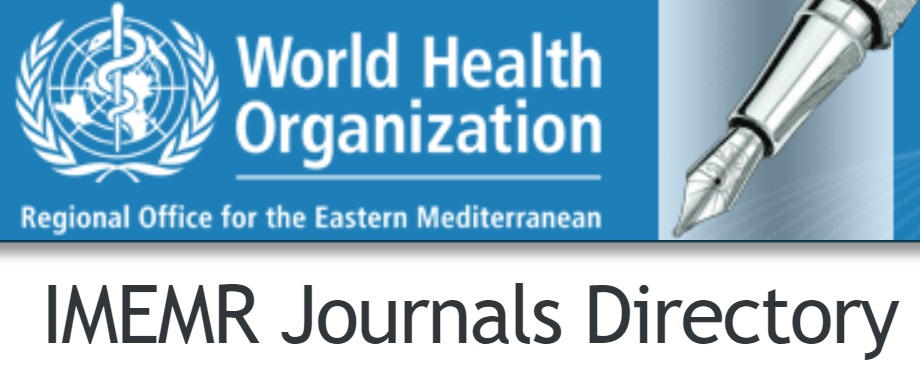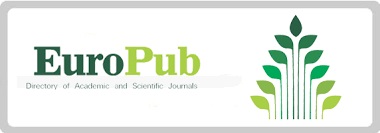The Effect of Immune Cell Abnormalities in the Pathogenesis of Chronic Prostatitis / Chronic Pelvic Pain Syndrome
Keywords:
Chronic prostatitis/chronic pelvic pain syndrome(CP/CPPS); immune cells; cytokines; Pelvic Pain; inflammationAbstract
Chronic prostatitis/chronic pelvic pain syndrome (CP/CPPS) is a prevalent urological condition with high incidence, complicated etiology, and unsatisfactory treatment. It seriously affects the quality of life of patients, and the pathogenesis of the disease is still not clear. This paper reviews the recent progress of research on the effect of immune cell abnormalities in CP/CPPS.
References
Chen L, Zhang M, Liang C. Chronic Prostatitis and Pelvic Pain Syndrome: Another Autoimmune Disease? Arch Immunol Ther Exp (Warsz). 2021; 69(1): 24. doi: 10.1007/s00005-021- 00628-3.
Kouiavskaia DV, Southwood S, Berard CA, Klyushnenkova EN, Alexander RB. T-cell recognition of prostatic peptides in men with chronic prostatitis/chronic pelvic pain syndrome. J Urol. 2009; 182(5): 2483-2489. doi: 10.1016/j.juro.2009.07.067.
Chen J, Zhang H, Niu D, Wei K, Zhang L, Yin S et al. The risk factors related to the severity of pain in patients with Chronic Prostatitis/Chronic Pelvic Pain Syndrome. BMC Urol. 2020; 20(1): 154. doi: 10.1186/s12894-020-00729-9.
Rivero VE, Motrich RD, Maccioni M, Riera CM. Autoimmune etiology in chronic prostatitis syndrome: an advance in the understanding of this pathology. Crit Rev Immunol. 2007; 27(1): 33-46. doi: 10.1615/critrevimmunol.v27.i1.30.
Motrich RD, Maccioni M, Molina R, Tissera A, Olmedo J, Riera CM et al. Presence of INFgamma-secreting lymphocytes specific to prostate antigens in a group of chronic prostatitis patients. Clin Immunol. 2005; 116(2): 149-57. doi: 10.1016/j.clim.2005.03.011.
Liu Y, Mikrani R, Xie D, Wazir J, Shrestha S, Ullah R et al. Chronic prostatitis/chronic pelvic pain syndrome and prostate cancer: study of immune cells and cytokines. Fundam Clin Pharmacol. 2020; 34(2): 160-172. doi: 10.1111/fcp.12517. Epub 2019 Nov 12.
Feng L, Shaopeng S, Dongfeng C. Effect of Xiaojin tablet on TNF-? and sex hormone in aged patients with benign prostatic hyperplasia. Hu Nan Shi Fan Da Xue Xue Bao(Yi Xue Ban). 2018; 15: 52 -55.
Yunhai Z, Yunfei X, Yaowu C. Expression of NGF and inflammatory factors in serum and prostatic fluid of elderly patients with type ? Prostatitis and their clinical significance. Xian Dai Sheng Wu Yi Xue Jin Zhan.8; 18(2): 272-275.
Lyndsey, Benjen L. Effects of tamoxifen on sexual function, urodynamics and serum inflammatory factors in type ? Prostatitis patients. Zhong Guo Xing Ke Xue. 2020; 29(11): 8-11.
Di Carlo E, Magnasco S, D'Antuono T. The prostate-associated lymphoid tissue (PALT) is linked to the expression of homing chemokines CXCL13 and CCL21. Prostate. 2007; 67(10): 1070-1080.
Wang P, Duan YG. The role of dendritic cells in male reproductive tract[J]. Am J Reprod Immunol. 2016; 76(3): 186-192.
Correa SG, Riera CM, Iribarren P. Involvement of peritoneal dendritic cells in the induction of autoimmune Prostatitis. J Autoimmun. 1997; 10(2): 107-113.
Zhao YY, Xu DL, Zhao FJ. Redundant prepuce increases the odds of chronic prostatitis/chronic pelvic pain syndrome (CP/CPPS). Asian J Androl. 2014; 16(5): 774-777.
He Qingxin, Li Xuede. Research progress on the relationship between chronic Prostatitis and cytokines. Zhong Hua Nan Ke Xue Za Zhi. 2011; 17(10): 939-942.
Zhu Zhenyan. The effect of Shenlingbaizhu powder on hemorheology index and serum levels of TNF-?, IL-2, and IL-6 in patients with chronic Prostatitis disease. Xian Dai Yi Xue Yu Jian Kang Yan Jiu Za Zhi. 2020; 4(19): 112-114.
Yandong H, Feng L, Wenlong L. Expression of IFN-?, TNF-? and IL-10 in Chronic prostatitis/chronic pelvic pain syndrome rats. Lin Chuang He Shi Yan Yi Xue Za Zhi. 2017; 16(05): 438-440.
Josefowicz SZ, Lu LF, Rudensky AY. Regulatory T cells: mechanisms of differentiation and function. Annu Rev Immunol. 2012; 30: 531-564.
Feng Y, Arvey A, Chinen T. Control of the inheritance of regulatory T cell identity by a cis-element in the Foxp3 locus. Cell. 2014; 158(4): 749-763.
Liu Y, Zhang Y, Zhang M. Activated autophagy restored the impaired frequency and function of regulatory T cells in chronic Prostatitis. Prostate. 2021; 81(1): 29-40.
Bai J, Wang S, Liu J. Characterization of circulating CD4+CD25high regulatory T cells in men with chronic prostatitis/chronic pelvic pain syndrome. Urology. 2010; 75(4): 938-942.
Chen J, Zhan C, Zhang L. The Hypermethylation of Foxp3 Promoter Impairs the Function of Treg Cells in EAP. Inflammation. 2019; 42(5): 1705-1718.
Kodak JA, Mann DL, Klyushnenkova EN. Activation of innate immunity by prostate-specific antigen (PSA). Prostate. 2006; 66(15): 1592-1599.
Yulong Z, Liwen A. Interleukin-1?Role in chronic Prostatitis. Zhong Guo Nan Ke Xue Za Zhi. 2019; 23(10): 67 -69.
Metz M, Maurer M. Mast cells--key effector cells in immune responses. Trends Immunol. 2007; 28(5): 234-241.
Rao KN, Brown MA. Mast cells: multifaceted immune cells with diverse roles in health and disease. Ann N Y Acad Sci. 2008; 1143: 83-104.
Grimbaldeston MA, Chen CC, Piliponsky AM. Mast cell-deficient W-sash c-kit mutant Kit W-sh/W-sh mice as a model for investigating mast cell biology in vivo. Am J Pathol. 2005; 167(3): 835-848.
Mingxing Z, Shicheng F, Siqing H. Relationship between mast cells and experimental autoimmune Prostatitis in rats. Zhong Hua Nan Ke Xue Za Zhi. 2018; 23(05): 399 -405.
Song Z, Jin C, Bian Z. Extracorporeal shock wave therapy decreases the number of total and degranulated mast cells and alleviates pelvic pain in a rat model of Prostatitis. Mol Cell Biochem. 2021; 476(4): 1905-1913.
Rudick CN, Schaeffer AJ, Thumbikat P. Experimental autoimmune prostatitis induces chronic pelvic pain. Am J Physiol Regul Integr Comp Physiol. 2008; 294(4): R1268-R1275.
Breser ML, Motrich RD, Sanchez LR. Chronic Pelvic Pain Development and Prostate Inflammation in Strains of Mice with Different Susceptibility to Experimental Autoimmune Prostatitis. Prostate. 2017; 77(1): 94-104.
Miller LJ, Fischer KA, Goralnick SJ. Nerve growth factor and chronic prostatitis/chronic pelvic pain syndrome. Urology. 2002; 59(4): 603-608.
Watanabe T, Inoue M, Sasaki K. Nerve growth factor level in the prostatic fluid of patients with chronic prostatitis/chronic pelvic pain syndrome is correlated with symptom severity and response to treatment. BJU Int. 2011; 108(2): 248-251.
He Y, Zeng H, Yu Y. Resveratrol improved detrusor fibrosis induced by mast cells during progression of chronic Prostatitis in rats. Eur J Pharmacol. 2017; 815: 495-500.
Ganeshan K, Bryce PJ. Regulatory T cells enhance mast cell production of IL-6 via surface-bound TGF- ?. J Immunol. 2012; 188(2): 594-603.
Murphy SF, Schaeffer AJ, Done J. IL17 Mediates Pelvic Pain in Experimental Autoimmune Prostatitis (EAP). PLoS One. 2015; 10(5): e0125623.
Zhan CS, Chen J, Chen J. CaMK4-dependent phosphorylation of Akt/mTOR underlies Th17 excessive activation in experimental autoimmune Prostatitis. Faseb J. 2020; 34(10): 14006-1402 3.
Quick ML, Wong L, Mukherjee S. Th1-Th17 cells contribute to the development of uropathogenic Escherichia coli-induced chronic pelvic pain. PLoS One. 2013; 8(4): e60987.
Wanchun W. Experimental study on the effect of Jiedu Huoxue Decoction on Type ?A Prostatitis and the effect of Jieduhuoxue Decoction on TNF-?, IL-8 and IL-10 in prostate tissue of rats. Hu Nan Zhong Yi Yao Da Xue. 2012.
Jin G, Xiaorong W. Expression and clinical significance of IL-6 and IL-8 in semen of patients with chronic Prostatitis disease. Jiang Xi Yi Yao. 2020; 55(08): 1050-1051.
Chen L, Chen J, Mo F. Genetic Polymorphisms of IFNG, IFNGR1, and Androgen Receptor and Chronic Prostatitis/Chronic Pelvic Pain Syndrome in a Chinese Han Population. Dis Markers. 2021; 2021: 2898336.
Schneider L, Dansranjav T, Neumann E. Post-prostatic-massage urine exosomes of men with chronic prostatitis/chronic pelvic pain syndrome carry prostate-cancer-typical microRNAs and activate proto-oncogenes. Mol Oncol. 2023; 17(3): 445-468.
Yong G. Whole-exome association analysis of chronic prostatitis/chronic pelvic pain syndrome and metagenomic study of intestinal microflora. Guang Xi Yi Ke Da Xue. 2019.
Downloads
Published
How to Cite
Issue
Section
License
Copyright (c) 2025 Journal of Liaquat University of Medical & Health Sciences

This work is licensed under a Creative Commons Attribution-NonCommercial-ShareAlike 4.0 International License.
Submission of a manuscript to the journal implies that all authors have read and agreed to the content of the undertaking form or the Terms and Conditions.
When an article is accepted for publication, the author(s) retain the copyright and are required to grant the publisher the right of first publication and other non-exclusive publishing rights to JLUMHS.
Articles published in the Journal of Liaquat University of Medical & health sciences are open access articles under a Creative Commons Attribution-Noncommercial - Share Alike 4.0 License. This license permits use, distribution and reproduction in any medium; provided the original work is properly cited and initial publication in this journal. This is in accordance with the BOAI definition of open access. In addition to that users are allowed to remix, tweak and build upon the work non-commercially as long as appropriate credit is given and the new creations are licensed under the identical terms. Or, in certain cases it can be stated that all articles and content there in are published under creative commons license unless stated otherwise.

